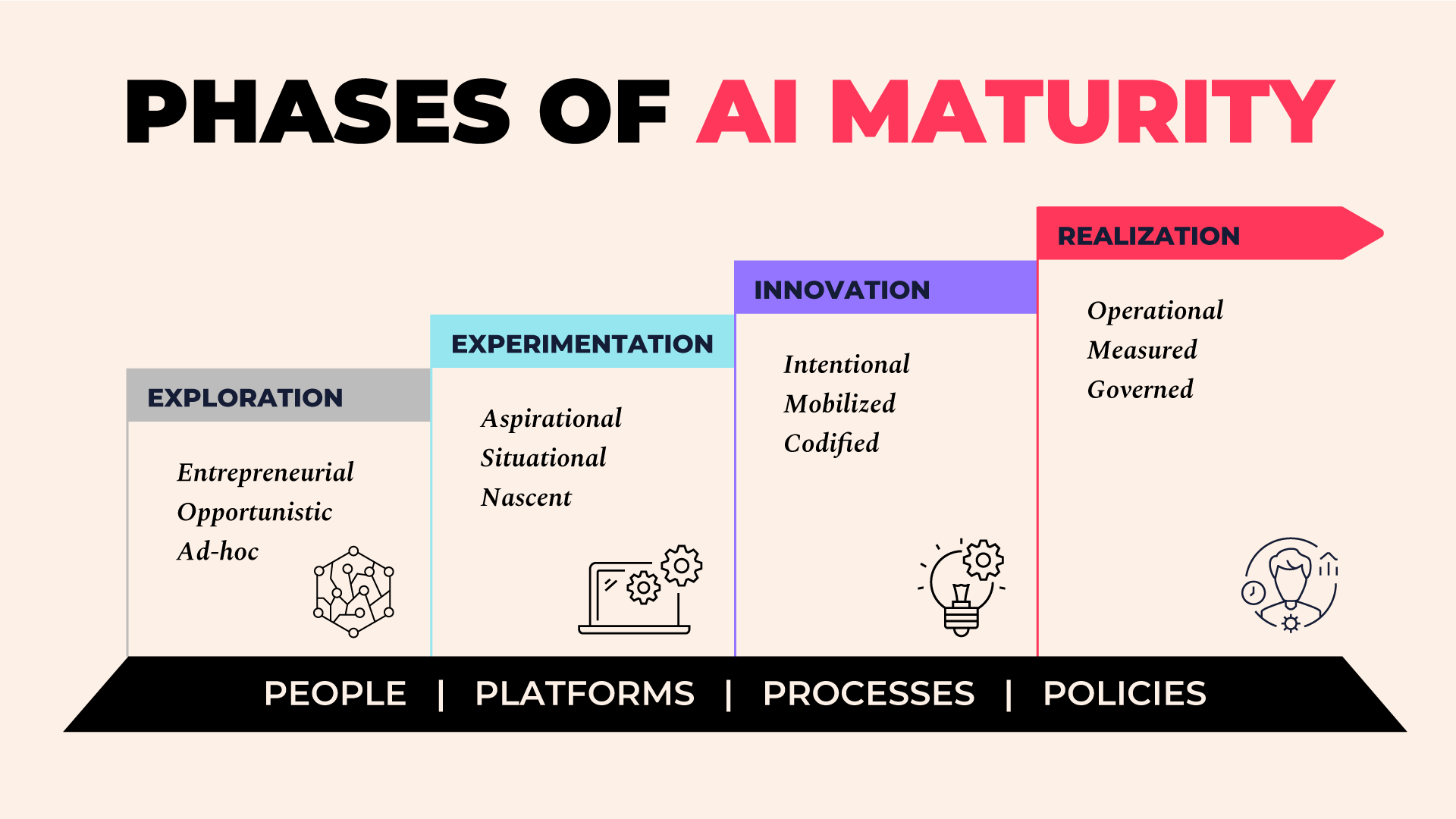WEF: Skill Gaps are the Biggest Barrier to Transformation

In the rapidly evolving landscape of artificial intelligence, Generative AI stands out as a transformative force capable of reshaping the way we work, collaborate, and innovate new ideas. From content creation to complex problem-solving, it promises unprecedented efficiency and creativity. However, to fully harness its potential, organizations must rethink their traditional workflows and adapt to new paradigms.
If you’re looking to understand how mature your organization’s AI efforts are right now, or you need practical tips for ascending to the next phase of AI maturity, keep reading. I'll use this post to explore practical strategies for integrating AI into your operations, discuss the essential steps for aligning AI initiatives with your business goals, and offer insights into managing the cultural and structural changes required for successful adoption.
But first, familiarize yourself with the four phases of AI maturity.

Advancing through these phases requires a concerted effort across several dimensions, including people, platforms, processes, and policies. It is extremely complex to navigate. However, it’s worth it because it might accelerate your organization’s AI maturity in ways you haven’t yet considered.
Join us as we delve into the future of work, powered by Generative AI.
Embarking on your organization’s AI journey starts with building foundational knowledge and identifying where AI can make the most impact. Here are some tips to help you build a strong foundation with AI.
Validating AI use cases and demonstrating their value through small-scale implementations is a crucial step in your AI journey. Here’s how you might start to think about experimentation.
Once you’ve validated AI use cases through successful pilot projects, the next move is to expand these initiatives across your organization intentionally. Here’s how.
Read Next: The Jobs A.I. Can and Cannot Replace (and Why You Shouldn't Worry)
By fully integrating AI into your decision-making and operational processes, you can unlock new opportunities, drive innovation, and maintain a strong competitive position in the market.
As we aim to get better at using AI in our organizations, we need to strike a balance between embracing new technology and boosting our emotional intelligence. Amit Ray, a pioneer in the compassionate artificial intelligence movement, said it perfectly: “As more and more artificial intelligence is entering into the world, more and more emotional intelligence must enter into leadership.”
It’s not just about using AI to make things faster and more efficient; it’s about leading with empathy and understanding. When leaders focus on emotional intelligence, they create a work environment where both technology and people can thrive. This means AI projects will be rolled out in ways that keep employees engaged and customers happy, ultimately making the whole organization stronger.
So, as we dive deeper into the world of AI, let’s remember that its true power is unlocked when guided by leaders who value the human touch. This balanced approach will not only drive business success but also create a more inclusive and positive workplace.

